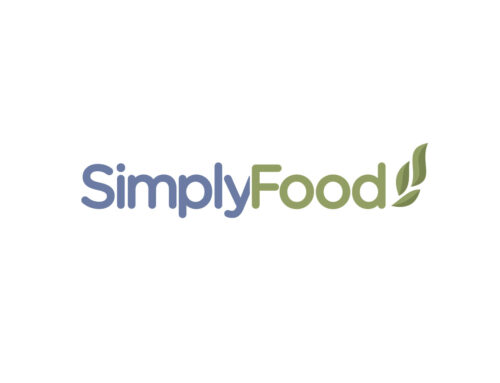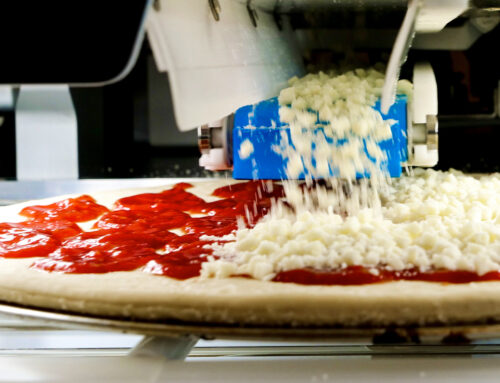At the height of the Covid-19 pandemic, food processors struggled to maintain safety as well as staff. Depending on existing distribution channels, many food companies were faced with one of two choices: (1) reduce or halt production due to lower demand (i.e., restaurants), or (2) increase production enormously to meet demand (i.e., grocery stores). No matter which side of the equation your company fell on, the year 2020 was chaotic, and in some cases crippling. Yet, food workers ascended among the heroes. Classified as “essential,” these extraordinary individuals continued to provide millions with a basic, human need—the need for food—while risking their own well-being.
While consumers feared getting infected by a deadly unknown virus, food producers feared worse—spreading a deadly unknown virus to others, potentially, through food. To make matters worse, some food workers were reluctant or fearful to go to work, leading to decreases in food production, such as the 25% workforce reduction in the pork industry in April 2020.
Today, improved sanitation protocols at production facilities are in place as well as more physical social distancing barriers or “spacers.” Food sales have somewhat stabilized (or are beginning to spring back for the most part), and we have seen an encouraging resurgence of dining and travel. Judging by shelves in the grocery store, things appear to be somewhat back to normal. Yet, one key ingredient remains in short supply—people.
Where Have all the Helpers Gone?
According to a recent New York Times article, “Labor shortages have rocked food distributors and manufacturers, who say they do not have enough people to drive trucks, or pull products from warehouses or work assembly lines. The virus has exacerbated the country’s shortage of truck drivers, and companies say they do not foresee enough young drivers applying to replace those aging out of the workforce.”
The Times states, “The Rich Products Corporation, a manufacturer in Buffalo that supplies food to more than 2,000 school districts, is struggling to hire workers, said Kevin Spratt, a senior vice president who leads the company’s K-12 team. Several of its plants have as many as 50 positions open.”
Whether your challenge is not enough applicants, not enough qualified applicants, or too much turnover, here are some tips to help you recruit and keep good employees.
5 Ideas to Attract and Retain Employees – Closing the Labor Gap in Food Manufacturing
- Sweeten the Deal (Yes, Money Talks) – The federal minimum wage has remained the same for a decade. According to Forbes, “The current rate, which sits at $7.25 an hour, has significantly less purchasing power than it did when it was introduced in 2009 … Simply put: Americans used to be able to buy more, and perhaps even build a more comfortable life, in the past while living on minimum wage. But not anymore.” It is also interesting to note that companies like Amazon, Target, Chipotle, and Walgreens now offer average or starting wages of $15 per hour, and more than half of all hourly workers at Costco are paid over $25 an hour. While the idea of paying higher wages may seem daunting, it is important to consider not only what the food industry is paying, but also what other opportunities may be available to good workers. As you consider allocating more to employee salaries, remember that technology, like SimplyFood software, can help reduce waste and capitalize on new opportunities. Increases in sales and revenue can offset additional payroll costs.
- Flexible “Core Hours” Scheduling – According to a recent study, “flexibility now ranks second only to compensation when it comes to job satisfaction.” While not all jobs or even most jobs in the food sector can offer the newly coveted “work from home” option, consider offering “core hours” to work alongside team members; then, allow employees to schedule the rest of their hours to suit their lifestyle. In one survey, “80% of workers would choose a job that offers a flexible schedule over those that did not” and “30% of respondents left their job because the company didn’t offer flexible options.” In the same study, “80% of respondents said they would be more loyal to their employer if they offered flexible work options.” Simply Food software supports flexible scheduling by allowing employees to check in from anywhere with internet access.
- Reward Outcomes Over Output (Bean Counters Need Not Apply) – According to a recent Harvard study, “86% of employees said they would prefer to work for a company that prioritizes outcomes over output.” Simply put, today’s employees want to be valued beyond what they can physically produce—instead, they want to be measured by what they bring to the business in a holistic sense. This “whole person” approach to management involves trusting employees to get the job done without being micromanaged, giving them space to reach their full potential. SimplyFood integrates unique tracking features that allow employees to document progress or actions into the software without someone looking over their shoulder. Ideally, a good ERP software for food will require less bean-counting, allowing more time to develop the strengths and natural talents of the team.
- Bring the Outside In – Working from home during the pandemic brought an awkward shift from the kitchen table or couch, to a fairly comfortable “office” space carved out of one’s home. One of the “perks,” of working from home is not only a flexible schedule but a little freedom and space to stretch and walk around. Of course, working from home has other perks, like we don’t always have to have to explain that we have an upcoming doctor’s visit, or that our kid just punched a classmate and needs to get picked up from school immediately. But the biggest lesson we learned from working at home during the pandemic was balance. We learned that even during a workday, it is enjoyable and even healthy to look out the window sometimes, get some air on the porch, or even walk to the mailbox. So, if you are thinking of adding amenities that provide value at your physical company workplace, consider sitting areas with lots of windows and well-planned outdoor spaces. Open spaces can include coffee areas, gyms, and dining areas and can give employees the feeling of space and connection as well as vitamin D! Energized employees are happier and more productive.
- Embrace Modern Values & Data – According to a Gallup Poll, older Millennials (born between 1980-1988) and young Millennials and Generation Z (born between 1989-2001) make up 46% of the full-time workforce in the United States. This generation was born in the internet boom—a time when an entire code of ethics had to be written for something never heard of before. Like a perpetual game of internet whack-a-mole, the ‘job’ of this new generation was to decide what was kind, or true, or what should be prohibited or banned. As we fast forward 20 years, we now find that Gen Z and Millennials value good ethics, inclusion, and prefer facts along with transparency. Make a company practice of sharing and explaining company updates and goals with all employees along with relevant data. SimplyFood software powered by Acumatica provides multiple tools that can illustrate company trends in the form of charts and graphs.





